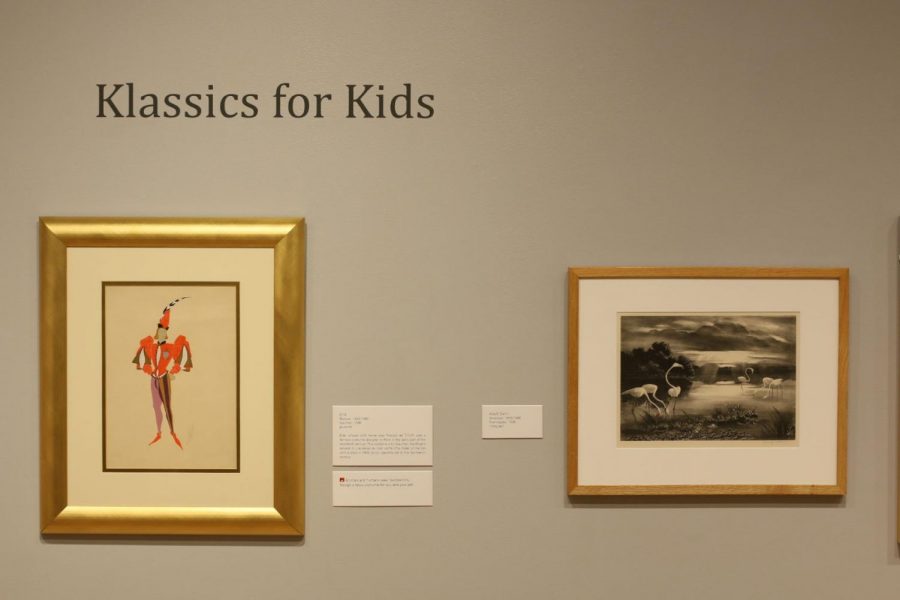‘Klassics for Kids’ offers educational interaction
July 5, 2016
The “Klassics for Kids” gallery is featured May to July at the Mulvane Art Museum on Washburn University’s campus, welcoming children to come interact and learn about art.
The gallery’s images range from the 16th to 20th century and feature art by Leonardo de Vinci and Pablo Picasso as well as many others from America and Europe. The gallery also features Jim Hunt, a contemporary artist from Kansas.
The space provided for the gallery encourages children to answer the questions posted next to the art work to learn about it and react and interact with the coloring space around them. Some paintings include questions about what is happening in the painting or how it makes them feel, hoping to deepen children’s understanding of art and its function.
“During the summer the museum offers this chance for kids to interact, since they are all out of school and it gets kids thinking about the gallery and not just the art downstairs,” said Lori Holstrom, senior anthropology major and student worker at the museum. “Last year we had an exhibit that was all farm animals. This year pulls kids in to think critically.”
The exhibit has shelving in the middle, called the ‘Inspiration Station,’ with a few instruments for the kids to play and a few different books on art. The pieces in this gallery are all part of the museums permanent collection and were chosen to be together to be entertaining and inspiring for children and their families.
“It gets children to foster their creativity,” said Sara Hosler, senior early childhood education major.
Hosler said that introducing children to art helps them with different skills, using different writing and drawing utensils. It introduces spacial reasoning and enhances what they are already learning in school. Giving them this opportunity early on helps them express themselves later in life.
The Garvey Fine Arts building also includes the ArtLab on the bottom floor and encourages kids to interact with art. The lab includes a chalk wall, a drawing and painting station and a room with many different materials to build with. The ArtLab also hosts classes for children all year long to help them interact with other children while creating art.
Holstrom said that the main goal of the museum and the lab at the moment is to get kids thinking about art and starting to create it. Looking and interacting with art can help them understand more about themselves and the things around them.
“There is no right or wrong in art,” Hosler said. “The children can let their imagination flow and it’s fun.”



